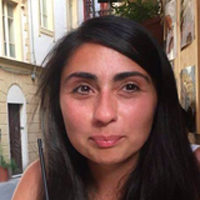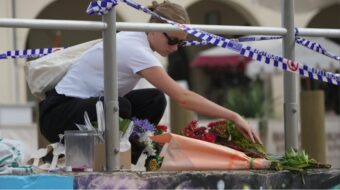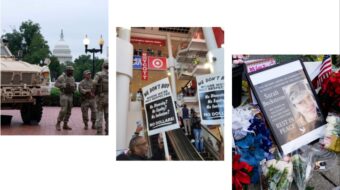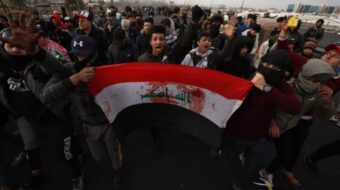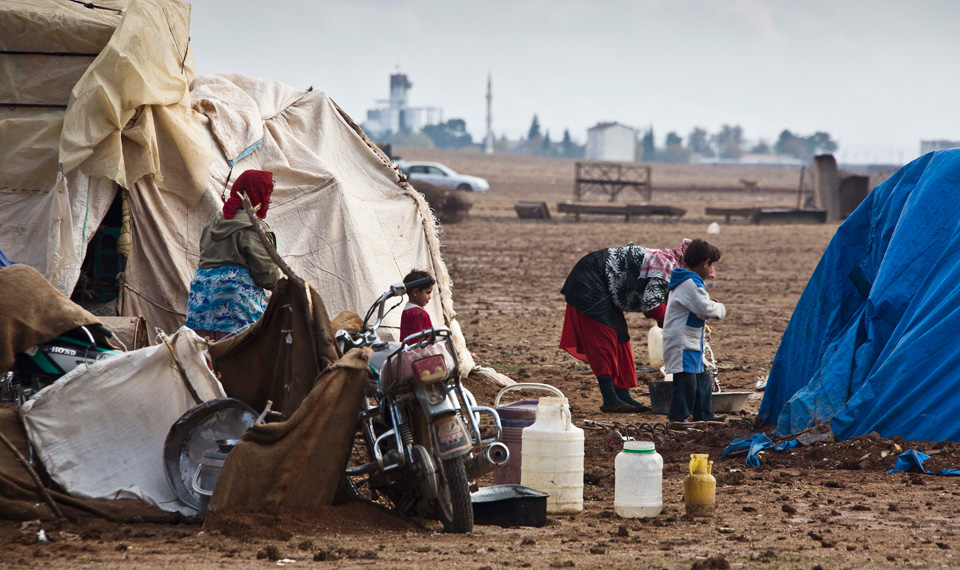
Like Stalingrad and Jamara, the Kurdish city of Kobani represents an epitome of anti-fascist struggle, famous for repelling the ISIS siege in the autumn and winter of 2014. In all three cases, revolutionary forces battled against the odds to win decisive victories, in the midst of competing imperialist powers prevaricating and contradicting themselves.
During the siege of Kobani in 2014, desperate for the world to pay attention to the destruction of the city by ISIS, the Kurdish movement called for a day of action on November 1, which became known as World Kobani Day.
This tradition has continued every year since to mark the heroic resistance of the Kurds in stopping the ISIS onslaught.
The city of Kobani lies in the very north of Syria, divided in two by the Turkey-Syria border. The border was plotted along the route of the Berlin-Baghdad railway following the first world war, during the colonial carving up of the Ottoman empire.
The name Kobani is believed to originate from the German word Kompanie, as it had been created as a company town situated on the line from Berlin during the golden age of imperialism.
Its proximity to the border meant that Turkey’s brutal policy towards the Kurds was put on display when it denied permission to allow people and weapons to flow into Kobani during the ISIS siege, despite the fact that the border was always porous when ISIS militants were attempting to cross.
Just a month prior to the siege of Kobani, ISIS militants had carried out the Sinjar massacre, killing and abducting thousands of Yazidi men and kidnapping the women as sex slaves in Sinjar, northern Iraq.
50,000 Yazidis fled to the mountains, without food, water, or medical care, and under siege by ISIS. The Kurdish forces of the Kurdistan Workers’ Party (PKK) from Turkey, the People’s Protection Units (YPG) from Syria, and the Peshmerga from Iraq launched an offensive to bring the Yazidis to safety.
The absolute horror of what happened in Sinjar, and the heroic rescue operation, was soon followed by the siege of Kobani.
In September 2014, ISIS launched an offensive on the city, capturing swathes of the villages surrounding the city, killing civilians, Kurdish militants, and forcing over 100,000 civilians to flee.
The situation deteriorated at the beginning of October when ISIS took some of the city’s suburbs, torturing, raping, mutilating, and beheading Kurds.
Incredibly, the YPG held firm, and were reinforced by hundreds of Kurdish volunteers crossing the border from Turkey.
By the time ISIS entered Kobani, most of the city’s residents had fled. After taking around half the city, it was looking like it could fall entirely to ISIS. However, once the Kurdish forces coordinated with U.S. air strikes, they were able to repel their common aggressors and push them back, finally regaining the city in January.
The Sinjar massacre and subsequent siege of Kobani provided stark examples not just of horrific acts of inhumanity but showed the world the resistance of the Kurdish people against repression.
Kobani became a byword for this heroic resistance. I asked Karker Bakur, an English construction worker, trade unionist, and YPG volunteer what impact the siege of Kobani had on his desire to join the fight against ISIS. “It was central,” he told me. “The siege of Kobani was a huge, global moment, and it was in the thousands-strong rally in London during the siege that I was sure I’d volunteer.
“During the same time, the martyrdom of Ivana Hoffmann [a 19-year-old German volunteer] showed me that it was possible for international leftists to volunteer.”
When I asked if this was the case among the wider ranks of international volunteers, he said: “Everyone had heard of Kobani, and we were always very excited to meet anyone who had fought in Kobani.
“It was legendary. We loved saying it, like it was almost too much to believe: ‘We’ll meet you in Kobani.’ It seemed unreal, like saying we’d meet in Stalingrad.”
Few people understand the extraordinary savagery of this battle. Ordinary young men and women took up arms against ISIS’ attempt to establish a caliphate through destruction, rape, pillage, and murder.
One of them was Arin Mirkan, a volunteer for the Women’s Protection Units (YPJ), who blew herself up as ISIS approached the Kurdish positions at the beginning of October to stop their onward march and evade capture.
This was at a crucial point in the siege: ISIS outnumbered the YPG, and were making huge advances, taking land right on the outskirts of the city.
The explosion killed over 20 jihadists, it is thought, and blew up two huge tanks that were advancing into Kobani. Arin was just 20 years old and a mother of two. She has since been immortalized in a statue.
Before joining the military ranks of the YPG, Bakur volunteered first in the reconstruction of Kobani.
“I took part in the reconstruction just after the siege, and then returned a year later as a soldier in the IFB [International Freedom Battalion, a unit within the YPG made up of international socialists and anarchists] in 2016, and it was unrecognizable.
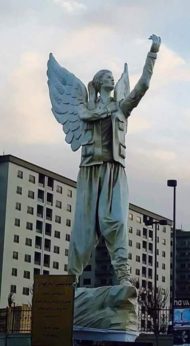
“It went from being a pile of rubble to being this hive of culture and life, centered on this incredible armed angel statue, the statue of Arin Mirkan.
“When we first returned to Kobani and saw the statue, we almost crashed our car; we were so taken with it.”
In the summer of 2015, a Turkish youth group, the Socialist Party of the Oppressed (SGDF), associated with the socialist, pro-Kurdish Peoples’ Democratic Party (HDP), organized a visit to Kobani to assist with the reconstruction.
As young people assembled in the border town of Suruc, an ISIS car bomb exploded, killing 33 young activists and injuring 104.
This is the risk borne by those who take up the struggle to forge a better life, free of repression, war, greed, and exploitation.
Despite this risk, the people of Kurdistan continue this struggle. Because of this, and despite the horrors of what happened in Sinjar and Kobani, there is hope.
Three years later, Kobani is secured, but the reconstruction work goes on.
The Democratic Federation of Northern Syria was declared in March 2016 as more of Rojava (Western Kurdistan) became liberated from ISIS control. It is not recognized by the Syrian government, although its supporters have said they see it as a step towards a federal Syria rather than a separate state.
The first commune elections were held in the Democratic Federation in September 2017, implementing multi-ethnic, multi-faith self-governance for the people of northern Syria.
On October 17, Raqqa—the self-declared capital of the ISIS “caliphate”—was liberated by the Syrian Defense Force led by the Kurdish YPG.
When I asked Bakur to summarize the significance of Kobani for the Kurdish liberation struggle, he invoked the famous Kurdish maxim: “Resistance is life, and Kobani is synonymous with resistance.”
Rosa Gilbert is co-secretary of the Kurdistan Solidarity Campaign. This article originally appeared in Morning Star.


